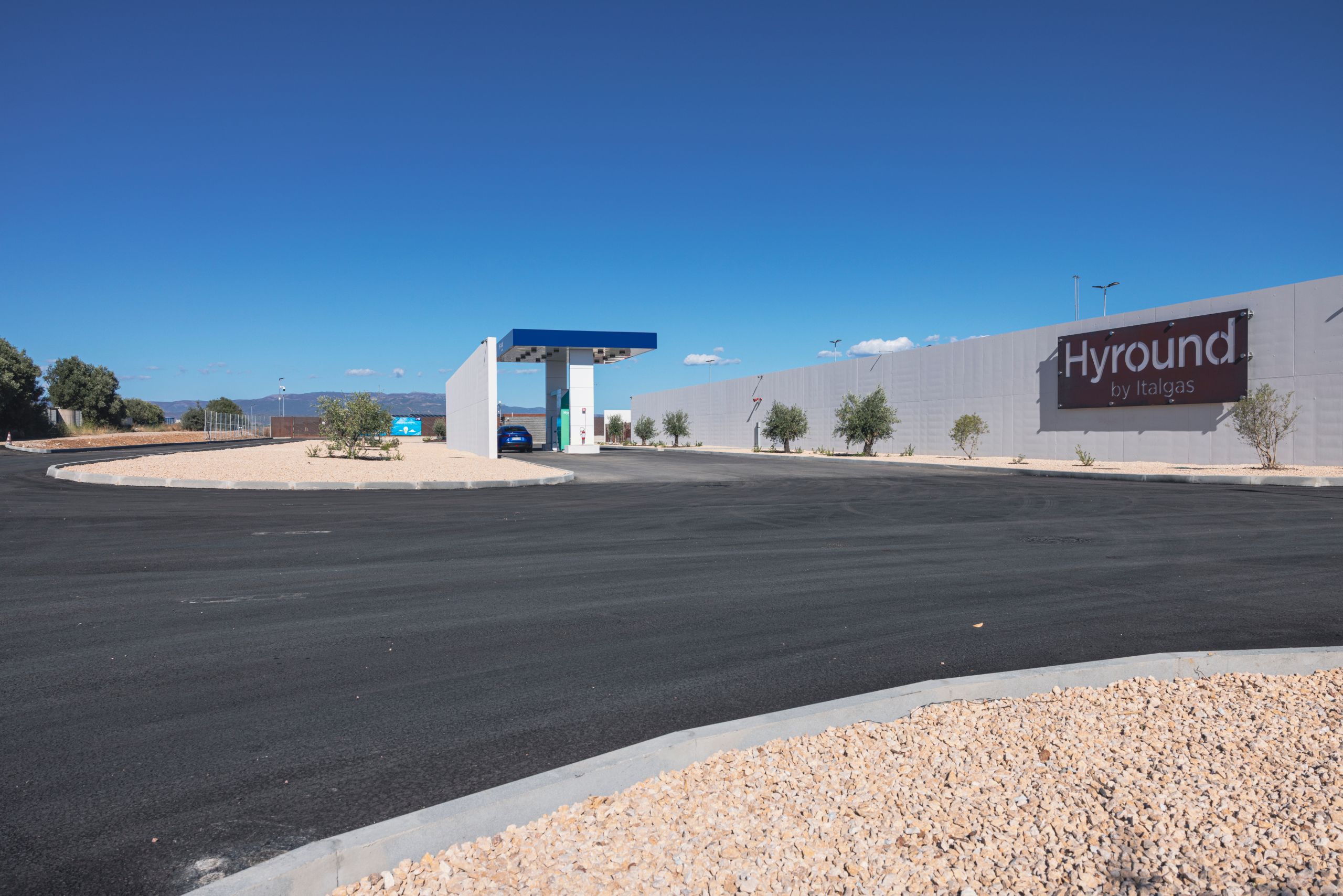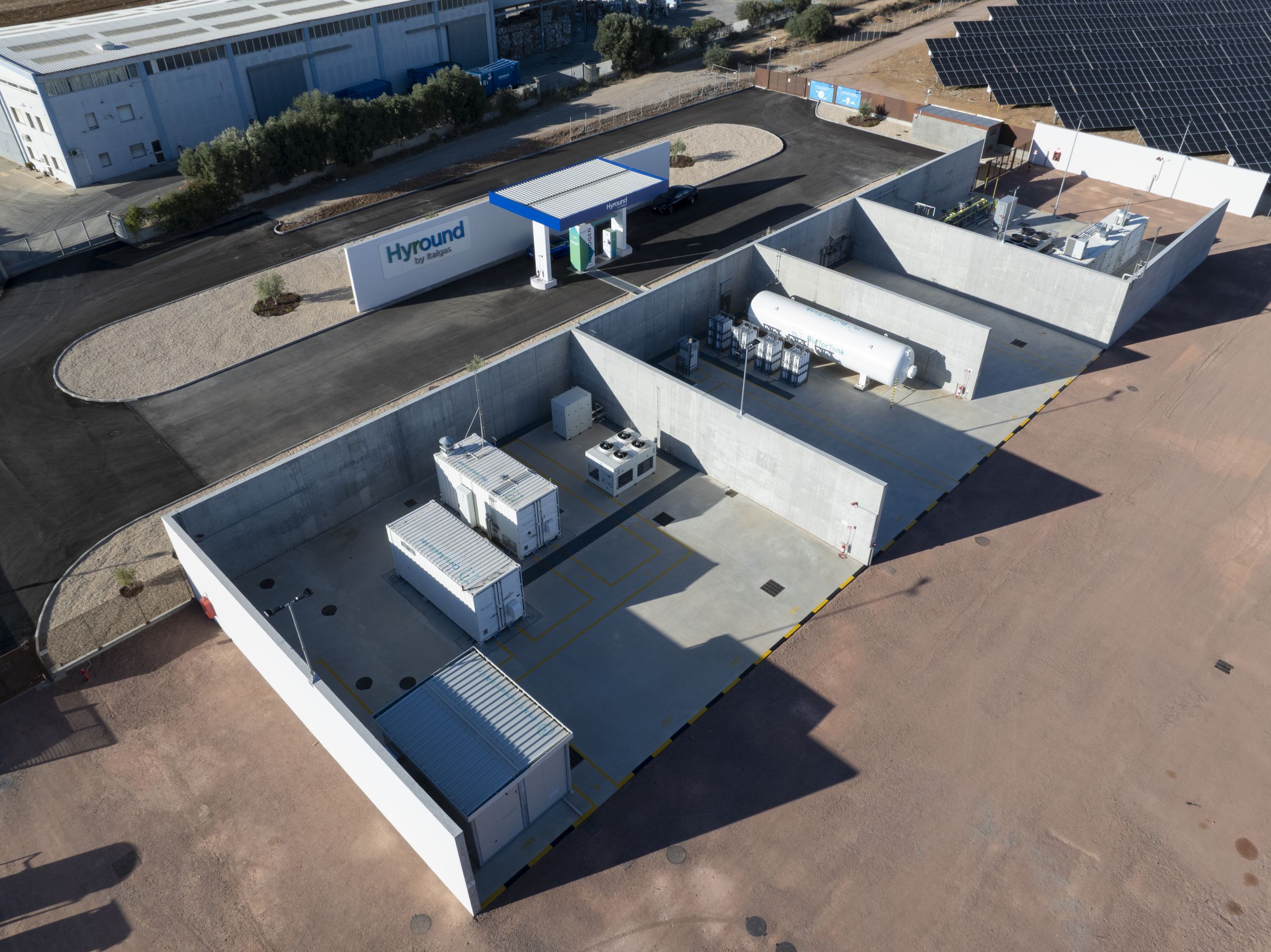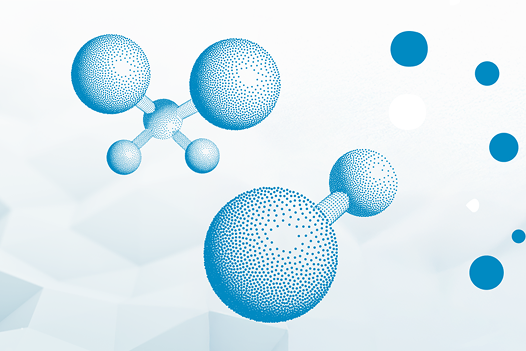
Hydrogen in Sestu’s “digitally native” network
Italy’s first energy community directly connected to a hydrogen production plant takes shape.
A network driving the energy transition
Italgas has launched a project in Sardinia to inject green hydrogen into the Sestu gas distribution network, blended with natural gas. This innovative initiative contributes to reducing CO₂ emissions, protecting the environment, and supporting the transition to more sustainable energy sources.

Power to Gas technology at the core of innovation
Hyround, developed by Italgas in Sestu, employs Power to Gas (P2G) technology to convert electricity into hydrogen through water electrolysis. Hyround serves as Italy’s first technological showcase for the green hydrogen production chain in urban environments. The hydrogen produced is intended for local industries, public transport buses, and customers connected to the gas distribution network. One of the most advanced plants in Europe, it produces hydrogen using only water and sunlight, ensuring a fully sustainable process.
Why Sestu?
Like all gas distribution networks recently developed by Italgas in Sardinia, the Sestu network is a state-of-the-art infrastructure. It is a “digitally native” network designed to receive and distribute renewable gases, including biomethane, hydrogen, and synthetic methane, as well as blends of these gases. The Sestu gas network was built and is operated by Medea, the Italgas Group company active in Sardinia.
-
Network extension ~ 46 km
-
Year of construction 2022

Hyround: a step towards decarbonisation
Hyround is Italy’s first project to establish a complete ecosystem for the production, storage, distribution, and use of green hydrogen. The plant is directly connected to the city’s gas distribution network and features a refuelling station for hydrogen-powered cars and buses.

The potential of hydrogen
Among renewable gases—also known as “green gases”—hydrogen plays a strategic role in the energy transition thanks to its availability and versatility.
Plant key figures
The plant includes a 1 MW photovoltaic field, a 0.5 MW electrolyser, a hydrogen storage system with multiple pressure levels and a total capacity of 550 kg, and a refuelling station (up to 215 kg, enough for approximately 10 buses per day). Initial hydrogen production is expected to reach around 21 tonnes per year, increasing to approximately 70 tonnes by 2028.
Funding Entities
The project has been partially funded by the European Union and the Ministry of Infrastructure and Transport.
